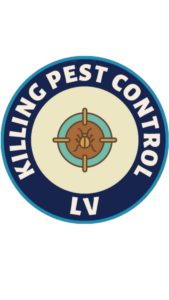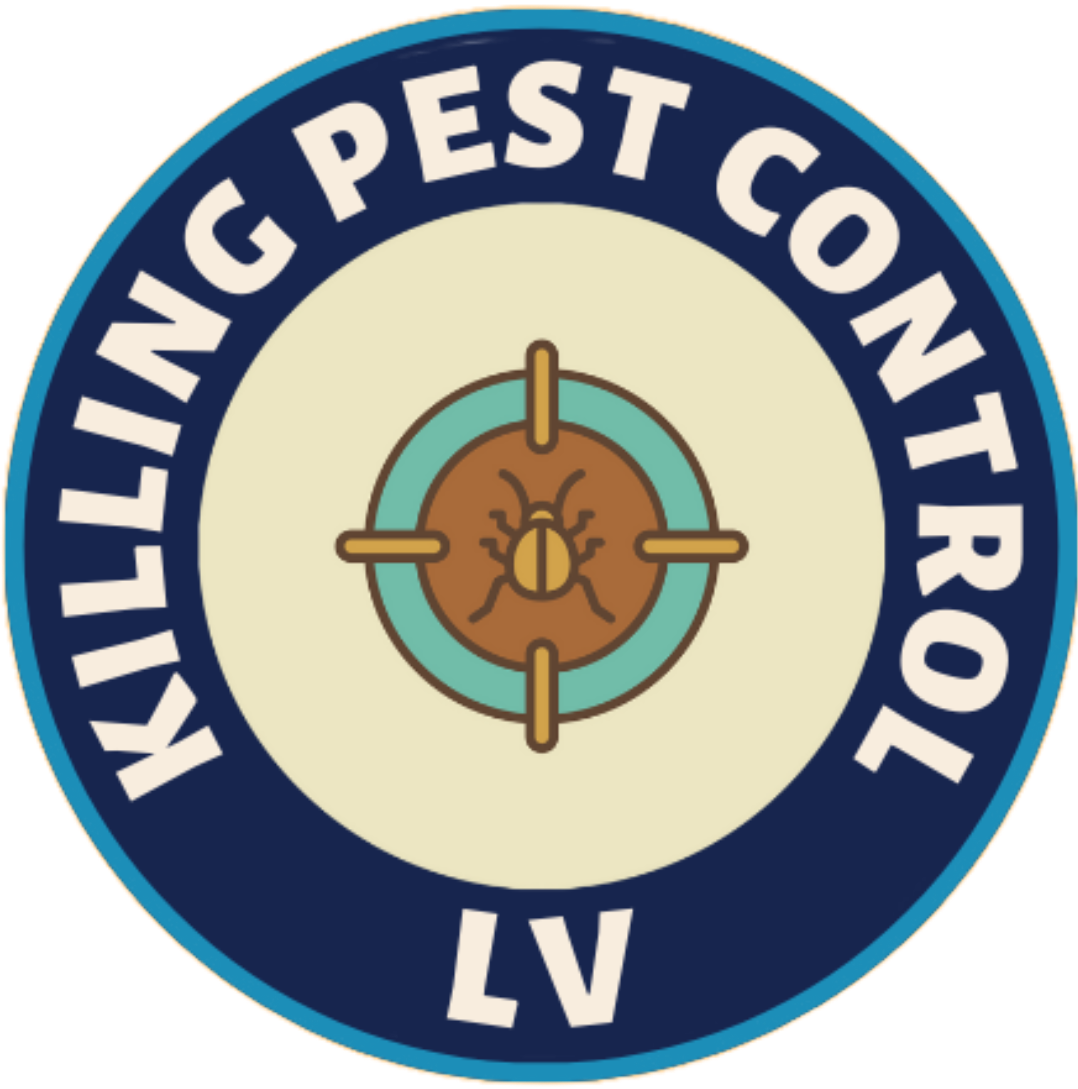KEEP YOUR FAMILY SAFE .DEFEND YOUR PEST
Escorpion
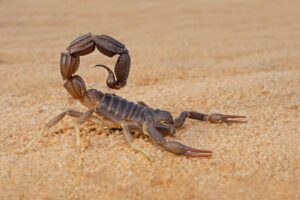
Scorpion pest control typically involves several steps to effectively manage and eliminate scorpions from a property. Here’s a general overview of the process:
1. **Identification**: The first step is to confirm the presence of scorpions on the property. A professional pest control technician will conduct a thorough inspection to identify scorpion hiding spots, entry points, and nesting areas.Read More
2. **Sanitation and Habitat Modification**: Scorpions are attracted to clutter, debris, and areas with abundant hiding spots. Clearing away clutter, sealing cracks and crevices, and removing potential hiding spots around the property can help reduce their habitat.
3. **Exclusion**: Sealing entry points such as gaps around doors, windows, utility lines, and vents is crucial to prevent scorpions from entering buildings.
4. **Chemical Treatments**: In severe infestations, chemical treatments may be necessary. Pest control professionals use insecticides specifically formulated to target scorpions. These treatments may include spraying insecticides around the perimeter of the property, along walls, in cracks and crevices, and in outdoor hiding spots.
5. **Indoor Treatment**: Indoor areas may also require treatment, especially if scorpions have been spotted inside the building. This may involve targeted application of insecticides in cracks and crevices, behind furniture, and along baseboards.
6. **Monitoring and Follow-Up**: After initial treatments, ongoing monitoring is essential to ensure the effectiveness of the pest control measures. Follow-up treatments may be necessary to eliminate any remaining scorpions and prevent future infestations.
7. **Preventive Measures**: Once the infestation is under control, implementing preventive measures such as regular maintenance, keeping the property clean and clutter-free, and sealing potential entry points can help minimize the risk of future scorpion infestations.
It’s important to note that scorpion control can be challenging and may require professional assistance, especially in severe infestations. Additionally, some species of scorpions are venomous, so it’s crucial to exercise caution when dealing with them and to seek professional help if needed.
Spider
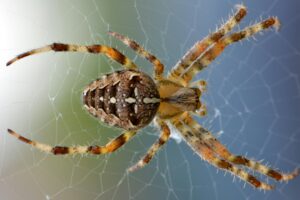
Spider pest control follows a similar process to other pest control methods but may have some specific considerations due to the behavior and biology of spiders. Here’s a general overview:
1. **Identification**: Identify the type of spiders present on the property. Not all spiders are harmful or require control measures. Some species are beneficial as they prey on other pests. A professional pest control technician can help identify the species and assess the level of infestation.Read More
2. **Sanitation**: Cleanliness plays a significant role in spider control. Regular cleaning and removal of clutter, webs, and debris help eliminate hiding spots and reduce the spider population.
3. **Exclusion**: Seal cracks, gaps, and other entry points to prevent spiders from entering buildings. This includes sealing around doors, windows, utility lines, vents, and any other openings spiders could use to gain access.
4. **Indoor Treatment**: Apply insecticides or spider-specific treatments in indoor areas where spiders are commonly found, such as basements, attics, crawl spaces, and corners. Focus on areas where spiders are likely to hide or build webs.
5. **Outdoor Treatment**: Treat outdoor areas, especially around the perimeter of the property, to create a barrier that prevents spiders from entering buildings. This may involve spraying insecticides along the foundation, around windows and doors, and in outdoor hiding spots.
6. **Natural Predators**: Encourage the presence of natural predators of spiders, such as certain species of birds, lizards, and other insects like centipedes and ground beetles, which can help keep the spider population in check.
7. **Regular Monitoring and Maintenance**: Keep an eye on spider activity and continue with regular maintenance to prevent future infestations. Periodic inspections and treatments may be necessary to maintain control.
8. **Preventive Measures**: Implement preventive measures to minimize the risk of spider infestations, such as reducing outdoor lighting that attracts insects (which, in turn, attracts spiders), keeping vegetation trimmed, and sealing entry points.
It’s important to note that while most spiders are harmless and play a beneficial role in controlling other pests, some species can pose health risks or cause property damage. If you’re dealing with a severe infestation or have concerns about venomous spiders, it’s best to consult with a professional pest control service for appropriate treatment and management strategies.
Mice

Mice pest control involves several steps to effectively manage and eliminate mice infestations in and around your property. Here’s a comprehensive guide:
1. **Inspection**: Conduct a thorough inspection of your property to identify areas where mice are active, including entry points, nesting sites, and food sources. Look for droppings, gnaw marks, tracks, and nests in secluded areas such as attics, basements, crawl spaces, and behind appliances.Read More
2. **Sealing Entry Points**: Seal any gaps, cracks, or holes that mice could use to enter your home. Use materials like steel wool, wire mesh, or caulk to block potential entry points around doors, windows, pipes, vents, and utility lines. Pay close attention to gaps larger than 1/4 inch.
3. **Eliminate Food Sources**: Keep food stored in airtight containers, and clean up spills and crumbs promptly. Store pet food in sealed containers, and avoid leaving food out overnight. Regularly clean kitchen appliances, cabinets, and countertops to remove food residues that attract mice.
4. **Remove Shelter**: Declutter and organize storage areas to eliminate hiding spots for mice. Trim vegetation away from the exterior of your home, and store firewood and other outdoor items off the ground. Seal gaps and cracks in foundations, walls, and roofs to prevent mice from nesting indoors.
5. **Trapping**: Set traps to capture mice and reduce their population. There are various types of traps available, including snap traps, glue traps, and humane live traps. Place traps along walls, near entry points, and in areas where mice are active, baiting them with peanut butter, cheese, or other food items.
6. **Rodenticides**: Consider using rodenticides as a last resort if trapping alone is not effective. Choose rodenticides labeled for mice control, and follow the manufacturer’s instructions carefully. Place bait stations in areas inaccessible to children and pets, and monitor them regularly to prevent accidental exposure.
7. **Sanitation**: Keep your home clean and clutter-free to minimize hiding spots and nesting sites for mice. Vacuum floors, sweep and mop regularly, and dispose of garbage in sealed bins. Seal gaps around plumbing fixtures and appliances to prevent mice from accessing water sources.
8. **Professional Pest Control**: If you’re dealing with a severe or persistent mouse infestation, or if DIY methods are not providing satisfactory results, consider hiring a licensed pest control professional. They can assess the extent of the infestation, implement targeted treatments, and provide ongoing monitoring and maintenance to ensure long-term control.
By following these steps and implementing an integrated pest management approach, you can effectively manage and eliminate mice infestations in your home or property. Remember to take preventive measures to reduce the risk of future infestations, such as regular inspections, maintenance, and exclusion efforts.
Ants
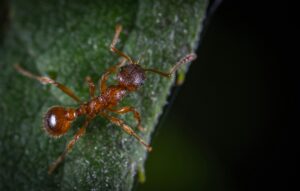
Controlling ants involves several steps to address the immediate infestation and prevent future occurrences. Here’s a comprehensive guide to ant pest control:
1. **Identify the Ant Species**: Different ant species may require different control methods. Knowing the species can help you determine the most effective approach. Common species include pavement ants, carpenter ants, odorous house ants, and pharaoh ants.Read More
2. **Locate Entry Points**: Inspect your property to find where ants are entering your home. Common entry points include cracks in walls, gaps around doors and windows, utility lines, and foundation vents. Seal these entry points using caulk, weather stripping, or other appropriate materials.
3. **Eliminate Food Sources**: Ants are attracted to food sources, including crumbs, spills, and open containers. Keep your kitchen clean by wiping down countertops, sweeping floors, and storing food in airtight containers. Don’t forget to clean up pet food and water bowls regularly.
4. **Remove Water Sources**: Like all living creatures, ants need water to survive. Fix leaky pipes, faucets, and appliances to eliminate standing water. Make sure to dry out wet areas, such as sinks and bathrooms, and use a dehumidifier in damp areas like basements.
5. **Use Ant Baits**: Ant baits are an effective way to control ant colonies at the source. Place ant bait stations near ant trails and entry points, allowing worker ants to carry the bait back to the nest. Follow the instructions on the product label carefully, and avoid using insecticides that can repel ants and scatter the colony.
6. **Apply Ant Sprays or Dusts**: In addition to baits, you can use ant sprays or dusts to treat active ant trails and nests. Choose products labeled for ant control and apply them according to the manufacturer’s instructions. Focus on areas where ants are most active, such as along baseboards, window sills, and outdoor entry points.
7. **Regular Cleaning and Maintenance**: Keep your home clean and tidy to prevent ant infestations. Vacuum carpets and floors regularly, and clean up spills and crumbs promptly. Trim vegetation away from the exterior of your home, and maintain a clear perimeter around your property to discourage ants from nesting nearby.
8. **Professional Pest Control**: If you’re dealing with a severe ant infestation or if DIY methods are not effective, consider hiring a licensed pest control professional. They can assess the situation, identify the ant species, and implement targeted treatments to eliminate the infestation and prevent recurrence.
By following these steps and implementing an integrated pest management approach, you can effectively control ants and keep them out of your home. Remember to be persistent and thorough in your efforts to achieve long-term ant control.
Mosquitos
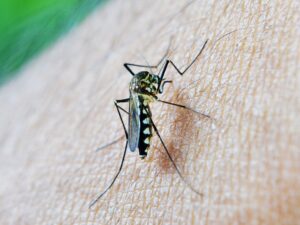
Mosquito pest control aims to reduce mosquito populations and minimize their impact on human health by preventing bites and controlling breeding sites. Here are some effective strategies for mosquito control:
1. **Eliminate Standing Water**: Mosquitoes breed in stagnant water, so removing or treating standing water sources can significantly reduce mosquito populations. Regularly empty and clean containers like flower pots, bird baths, gutters, and pet bowls. Ensure that water doesn’t accumulate in tires, tarps, or other items around your property.Read More
2. **Mosquito Larvae Control**: Use larvicides to treat stagnant water sources that cannot be drained or emptied. Larvicides are insecticides specifically designed to kill mosquito larvae before they mature into biting adults. Follow the instructions on the product label carefully and use only as directed.
3. **Mosquito Repellents**: Apply insect repellents containing DEET, picaridin, or oil of lemon eucalyptus to exposed skin and clothing to prevent mosquito bites. Use mosquito nets or screens on windows and doors to keep mosquitoes out of your home.
4. **Mosquito Traps**: Set up mosquito traps to capture and kill adult mosquitoes. These traps use attractants such as carbon dioxide, heat, and light to lure mosquitoes into the trap, where they are either trapped or killed.
5. **Outdoor Fogging and Spraying**: Outdoor fogging or spraying with insecticides can be effective in reducing adult mosquito populations in outdoor areas. This method is typically performed by trained professionals and may be used in combination with larviciding and other control measures.
6. **Natural Predators**: Encourage the presence of natural mosquito predators such as birds, bats, fish, and dragonflies. Installing bat houses, bird feeders, or adding fish to ornamental ponds can help control mosquito populations naturally.
7. **Mosquito-Proof Your Home**: Seal gaps and cracks in windows, doors, and screens to prevent mosquitoes from entering your home. Repair or replace damaged screens, and use weather stripping to seal gaps around doors and windows.
8. **Regular Maintenance**: Keep your yard well-maintained by mowing the lawn regularly, trimming vegetation, and removing debris that can provide resting and breeding sites for mosquitoes. Consider landscaping with plants that repel mosquitoes, such as citronella, lavender, and marigolds.
9. **Community Efforts**: Coordinate with neighbors and local authorities to address mosquito breeding sites on a larger scale. Community-based mosquito control programs may involve surveillance, larviciding, and public education efforts to reduce mosquito populations and prevent the spread of mosquito-borne diseases.
By implementing these strategies and taking proactive measures to control mosquitoes, you can help protect yourself and your community from the nuisance and potential health risks associated with mosquito bites.
Bedbugs

Bedbug pest control requires a comprehensive approach to eliminate infestations effectively. Here are steps you can take to manage bedbugs:
1. **Identification**: Confirm the presence of bedbugs by inspecting your bedding, mattress seams, furniture, and other areas where bedbugs hide. Look for signs like reddish-brown stains (fecal spots), shed skins, and live bugs.Read More
2. **Containment**: Limit the spread of bedbugs by containing infested items in sealed plastic bags. Avoid moving infested items to other areas of your home to prevent further infestations.
3. **Declutter and Clean**: Reduce hiding spots for bedbugs by decluttering your living space. Vacuum carpets, rugs, mattresses, and furniture thoroughly, paying special attention to cracks, crevices, and seams. Dispose of vacuum bags in sealed plastic bags immediately after use.
4. **Wash and Heat Treat Clothing and Bedding**: Launder bedding, clothing, curtains, and other washable items in hot water (at least 60°C or 140°F) followed by high-heat drying. Heat treatment can also be used for items that cannot be washed, such as stuffed animals, shoes, and bags.
5. **Use Encasements**: Encase mattresses, box springs, and pillows in bedbug-proof encasements to trap bedbugs and prevent them from feeding or escaping. Encasements should remain in place for at least a year to ensure any trapped bedbugs die from starvation.
6. **Apply Pesticides**: Use insecticides labeled for bedbug control to treat infested areas. Follow the product instructions carefully, and consider seeking professional help for effective application and treatment. Note that overuse or misuse of pesticides can be harmful and may exacerbate the problem.
7. **Steam Treatment**: Steam cleaning can effectively kill bedbugs and their eggs on surfaces and in cracks and crevices. Use a steam cleaner with a high-temperature setting (above 60°C or 140°F) and direct the steam at infested areas for thorough treatment.
8. **Inspect and Seal Cracks and Crevices**: Seal cracks, crevices, and gaps in walls, baseboards, and furniture to eliminate hiding spots for bedbugs. Use caulking or sealant to seal openings around pipes, wires, and outlets.
9. **Prevent Reinfestation**: After eliminating bedbugs, take preventive measures to avoid reinfestation. Regularly inspect your home for signs of bedbugs, avoid bringing used furniture or bedding into your home without inspection, and be cautious when traveling to prevent bringing bedbugs home with you.
10. **Professional Treatment**: Consider hiring a licensed pest control professional with experience in bedbug extermination for severe or persistent infestations. Professionals have access to specialized equipment, treatments, and techniques to effectively eliminate bedbugs and prevent future infestations.
It’s important to be patient and persistent when dealing with bedbugs, as eradication may take time and multiple treatments. Early detection and prompt action are key to preventing bedbug infestations from spreading and becoming more difficult to control.
Cockroaches
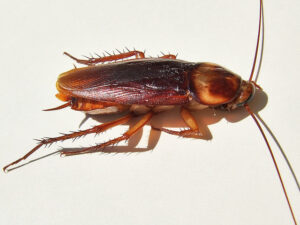
Cockroach pest control requires a multifaceted approach to effectively manage infestations and prevent their recurrence. Here’s a comprehensive guide to cockroach control:
1. **Identification**: Identify the species of cockroaches present in your home. Common species include German cockroaches, American cockroaches, and Oriental cockroaches. Knowing the species can help determine the most effective control methods.Read More
2. **Sanitation**: Cockroaches are attracted to food, water, and shelter. Keep your home clean and free of crumbs, spills, and clutter. Store food in airtight containers, clean up pet food and water bowls, and promptly fix leaky faucets and pipes to eliminate water sources.
3. **Eliminate Hiding Places**: Cockroaches hide in cracks, crevices, and dark, secluded areas during the day. Seal gaps and cracks in walls, floors, and cabinets using caulk or sealant. Declutter your home to reduce hiding spots, and remove piles of newspapers, magazines, and cardboard boxes.
4. **Use Cockroach Baits**: Cockroach baits contain insecticides mixed with attractive food materials that lure cockroaches. Place bait stations in areas where cockroaches are active, such as kitchens, bathrooms, and behind appliances. Follow the manufacturer’s instructions for placement and use.
5. **Apply Insect Growth Regulators (IGRs)**: IGRs disrupt the growth and development of cockroach nymphs, preventing them from reaching reproductive maturity. Apply IGRs in areas where cockroaches breed and harbor, such as cracks, crevices, and baseboards.
6. **Use Cockroach Sprays and Dusts**: Insecticide sprays and dusts can be used to treat cracks, crevices, and other hiding places where cockroaches are found. Choose products labeled for cockroach control and follow the manufacturer’s instructions carefully.
7. **Regular Cleaning and Maintenance**: Maintain good hygiene practices to prevent cockroach infestations. Vacuum floors and carpets regularly, wipe down surfaces, and clean kitchen appliances to remove food residues. Empty garbage cans frequently, and dispose of trash in sealed bins.
8. **Monitor and Inspect**: Regularly inspect your home for signs of cockroach activity, such as droppings, egg cases, and dead cockroaches. Monitor bait stations and traps, and replace them as needed. Early detection can help prevent infestations from becoming severe.
9. **Professional Pest Control**: If you’re dealing with a severe or persistent cockroach infestation, or if DIY methods are not effective, consider hiring a licensed pest control professional. Professionals have access to specialized treatments and equipment to eliminate cockroaches safely and effectively.
10. **Preventive Measures**: Take preventive measures to reduce the risk of cockroach infestations. Seal cracks and gaps, repair leaky plumbing, and keep your home clean and clutter-free. Implementing preventive measures can help minimize the likelihood of future infestations.
By following these steps and implementing an integrated pest management approach, you can effectively control cockroach infestations and prevent their recurrence in your home. Remember to be persistent and thorough in your efforts for long-term cockroach control.
Snake
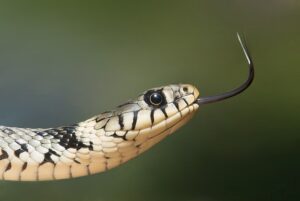
Snake pest control primarily involves implementing measures to deter snakes from entering your property and making your property less attractive to them. Here are some strategies for snake control:
1. **Remove Attractants**: Snakes are drawn to areas with abundant food sources, shelter, and water. To make your property less appealing to snakes, eliminate potential food sources such as rodents and insects by keeping your property clean and free of debris.Read More
2. **Seal Entry Points**: Snakes can enter buildings through small openings and gaps. Seal cracks, gaps, and holes in walls, foundations, and around doors and windows to prevent snakes from entering your home or other structures on your property.
3. **Install Snake Fencing**: Install snake-proof fencing around your property to create a physical barrier that prevents snakes from entering. Snake fencing should be constructed with tight mesh or solid material and extend underground to deter burrowing.
4. **Use Snake Repellents**: There are various snake repellents available on the market that use natural or chemical ingredients to deter snakes from entering specific areas. These repellents typically emit odors or vibrations that snakes find unpleasant. Follow the manufacturer’s instructions carefully when using snake repellents.
5. **Keep Vegetation Trimmed**: Snakes may use overgrown vegetation as hiding spots and travel corridors. Keep grass mowed, trim bushes and shrubs, and remove dense vegetation near buildings to reduce hiding places for snakes.
6. **Install Hardware Cloth**: Place hardware cloth or wire mesh around potential entry points such as vents, pipes, and crawl space openings to prevent snakes from accessing these areas.
7. **Educate Yourself**: Learn about the types of snakes that are common in your area, their behavior, and their habitats. Understanding snake behavior can help you identify and address potential risk factors on your property.
8. **Professional Assistance**: If you encounter a snake infestation or are unsure how to effectively manage snake control on your property, consider consulting with a professional pest control service. Pest control professionals have the expertise and tools necessary to safely and effectively handle snake-related issues.
It’s important to note that snakes play a vital role in the ecosystem by controlling rodent populations and other pests. If you encounter a snake on your property, it’s best to leave it alone or contact local wildlife authorities for assistance in safely relocating the snake if necessary.
Bees
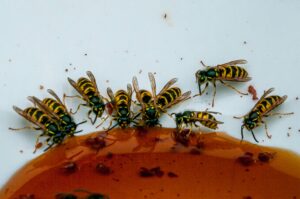
When it comes to bees, it’s important to differentiate between honeybees, which are crucial pollinators and generally beneficial to the environment, and aggressive or nuisance bees such as Africanized honeybees or carpenter bees. Here are some general guidelines for managing bees:
1. **Identify the Species**: Determine the type of bees you’re dealing with. Honeybees, bumblebees, and many other native bee species are important pollinators and should be preserved. However, aggressive or nuisance bees may require management.Read More
2. **Consult a Professional**: If you’re unsure about the type of bees or the best course of action, it’s advisable to consult with a professional beekeeper or pest control expert. They can provide guidance and assistance based on their expertise.
3. **Prevent Nesting**: Take preventive measures to deter bees from nesting on your property. Seal gaps, cracks, and openings in buildings to prevent bees from establishing hives. Remove potential nesting sites such as old tree stumps, hollow trees, and abandoned structures.
4. **Avoid Disturbing Nests**: If you discover a bee nest on your property, avoid disturbing it. Aggressive bees may become defensive if their nest is disturbed, increasing the risk of stings. Keep children and pets away from the area and avoid loud noises or vibrations that may agitate the bees.
5. **Use Traps**: For solitary bees such as carpenter bees, traps can be an effective way to capture and remove them from your property. Place traps near nesting sites or areas where bees are active, following the manufacturer’s instructions for placement and use.
6. **Consider Professional Removal**: If you have a large or aggressive bee colony that poses a threat to human safety or property, it may be necessary to hire a professional beekeeper or pest control service for removal. They have the expertise and equipment to safely remove bee colonies and relocate them if possible.
7. **Provide Alternative Nesting Sites**: Consider installing bee houses or nesting boxes designed specifically for non-aggressive bee species. These structures can provide shelter for beneficial bees and help support pollinator populations in your area.
8. **Educate Yourself**: Learn about the importance of bees in the ecosystem and the benefits they provide as pollinators. Understanding the role of bees can foster appreciation for these valuable insects and guide your efforts to coexist with them peacefully.
It’s important to approach bee management with caution and respect for these valuable pollinators. Whenever possible, opt for humane and environmentally friendly methods that prioritize the preservation of bee populations.
Termites

Termite pest control requires a comprehensive approach to effectively manage infestations and prevent damage to structures. Here are the steps involved in termite control:
1. **Identification**: Confirm the presence of termites by inspecting your property for signs of infestation, such as mud tubes, damaged wood, discarded wings, and termite droppings (also known as frass). Different termite species may require different treatment methods, so accurate identification is crucial.Read More
Grasshopper
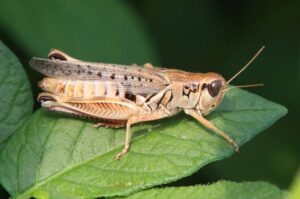
Controlling grasshopper populations can be challenging due to their mobility and ability to feed on a wide range of plants. However, there are several strategies you can employ to manage grasshopper infestations:
1. **Habitat Modification**: Grasshoppers prefer sunny, dry areas with low vegetation. Altering the landscape by reducing bare ground and increasing plant diversity can make the area less attractive to grasshoppers.Read More
2. **Natural Predators**: Encourage the presence of natural predators of grasshoppers, such as birds, rodents, reptiles, and predatory insects like spiders and wasps. Providing habitat and food sources for these predators can help keep grasshopper populations in check.
3. **Biological Control**: Biological control agents, such as pathogens and parasites specific to grasshoppers, can be used to reduce grasshopper populations. These agents are often applied as microbial insecticides or introduced into grasshopper habitats to target nymphs and adults.
4. **Chemical Control**: In severe infestations, chemical insecticides may be necessary to control grasshopper populations. However, chemical control should be used as a last resort and applied judiciously to minimize harm to non-target organisms and the environment. Follow label instructions carefully and consider consulting with a professional pest control expert.
5. **Cultural Control**: Cultural practices, such as crop rotation, tillage, and planting timing, can help manage grasshopper populations by disrupting their life cycle and reducing food availability. Planting less preferred crops or varieties may also deter grasshoppers from infesting an area.
6. **Physical Barriers**: Use physical barriers, such as row covers or netting, to protect vulnerable plants from grasshopper feeding damage. Floating row covers can be draped over plants to prevent grasshoppers from accessing them, especially during the peak feeding season.
7. **Trap Crops**: Plant trap crops, such as sunflowers or alfalfa, to attract grasshoppers away from valuable crops or ornamental plants. Once grasshoppers are concentrated on the trap crops, they can be more easily controlled using other management methods.
8. **Monitoring and Early Detection**: Regularly monitor your property for signs of grasshopper activity, such as feeding damage and egg laying sites. Early detection allows for timely intervention and can prevent grasshopper populations from reaching damaging levels.
9. **Community Efforts**: Coordinate with neighbors and local authorities to implement grasshopper control measures on a larger scale. Community-based control efforts, such as synchronized planting schedules or coordinated insecticide applications, can help manage grasshopper populations more effectively.
By combining multiple control strategies and implementing them strategically, you can effectively manage grasshopper infestations and minimize damage to crops and ornamental plants. Remember to prioritize environmentally friendly and sustainable control methods whenever possible to protect beneficial organisms and maintain ecosystem balance.

INSECTS HARASSING YOU
If you’re experiencing issues with insects harassing you, here are some general tips to help mitigate the problem:Read More
1. **Identify the Insects**: Determine the type of insects causing the issue. This can help you understand their behavior and implement appropriate control measures.
2. **Eliminate Attractants**: Remove sources of food, water, and shelter that may be attracting insects to your vicinity. Clean up spills, store food properly, and seal garbage bins tightly.
3. **Seal Entry Points**: Inspect your home or property for any gaps, cracks, or openings that insects could use to enter. Seal these entry points with caulk or other appropriate materials.
4. **Use Screens**: Install window screens and door sweeps to prevent insects from entering your home or building.
5. **Keep Outdoor Areas Clean**: Regularly clean outdoor living spaces, including patios, decks, and yards, to reduce insect breeding grounds and hiding places.
6. **Use Repellents**: Apply insect repellents, such as those containing DEET or picaridin, to your skin and clothing when spending time outdoors. You can also use natural repellents like citronella or eucalyptus oil.
7. **Wear Protective Clothing**: When outdoors in areas with high insect activity, wear long sleeves, pants, and closed-toe shoes to reduce exposure to biting insects.
8. **Install Traps**: Use insect traps or sticky traps to capture and control insect populations indoors.
9. **Consult a Professional**: If the insect problem persists despite your efforts, consider contacting a pest control professional for assistance. They can assess the situation and recommend appropriate control measures.
10. **Stay Informed**: Learn about the habits and behaviors of the insects in your area to better understand how to prevent and control them effectively.
By taking these steps, you can help reduce the presence of insects and minimize the impact of their harassment on your daily life.
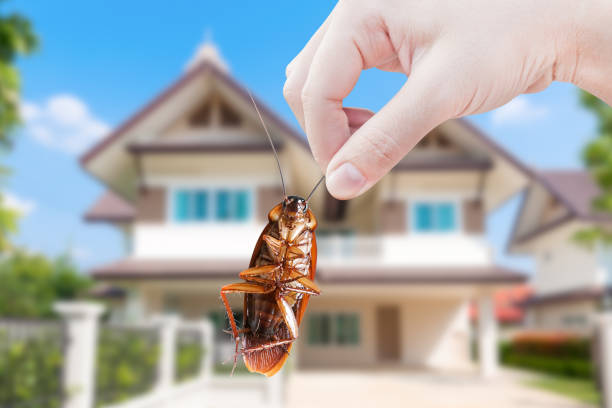
LET YOUR FAMILY ENJOY INSECT-FREE HOUSE
Creating an insect-free environment in your home can Read More
1. **Regular Cleaning**: Maintain a clean and clutter-free environment inside your home. Regularly vacuum carpets, sweep floors, and wipe down countertops to remove crumbs and spills that can attract insects.
2. **Seal Entry Points**: Inspect doors, windows, and other entry points for gaps or cracks where insects could enter your home. Seal these openings with caulk or weather stripping to prevent access.
3. **Install Screens**: Ensure that windows and doors are equipped with tight-fitting screens to keep insects out while allowing fresh air to circulate.
4. **Proper Food Storage**: Store food items in sealed containers to prevent access by insects like ants, cockroaches, and pantry pests. Keep kitchen surfaces clean and promptly clean up spills.
5. **Remove Standing Water**: Eliminate sources of standing water both inside and outside your home, as they can attract mosquitoes and other pests. Fix leaks, empty pet water bowls regularly, and ensure proper drainage around your property.
6. **Trim Vegetation**: Keep shrubs, trees, and other vegetation trimmed and away from the exterior of your home. This helps deter pests like ants, spiders, and rodents from accessing your house.
7. **Dispose of Garbage Properly**: Use sealed trash cans with tight-fitting lids, and empty them regularly to avoid attracting flies, roaches, and other pests.
8. **Routine Pest Control**: Consider implementing a routine pest control program to prevent insect infestations. This may involve applying insecticide barriers around the perimeter of your home or using bait stations indoors.
9. **Natural Remedies**: Explore natural insect repellents and deterrents, such as essential oils like citronella, peppermint, or lavender. These can be used as sprays or diffused indoors to repel insects.
10. **Professional Assistance**: If you’re dealing with a persistent insect problem, consider hiring a professional pest control service. They can conduct a thorough inspection, identify the source of the issue, and implement targeted treatments to eliminate pests effectively.
By following these tips and maintaining a proactive approach to pest management, you can help ensure that your family enjoys an insect-free home environment.
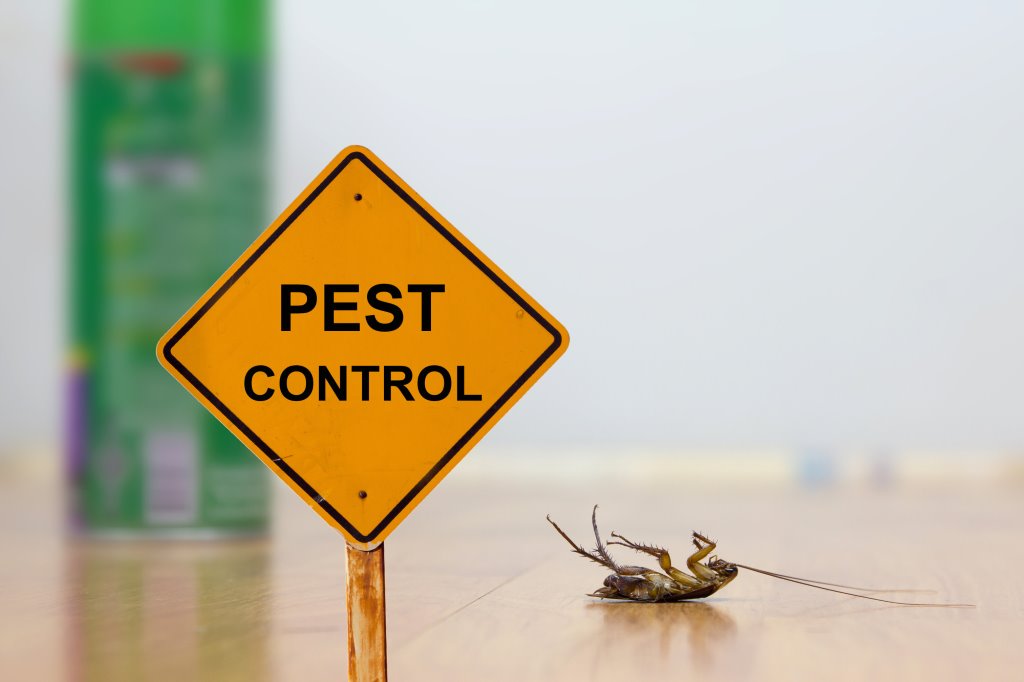
User JUST 3 EASY STEPS TO A PEST-FREE HOME
Certainly! Here are three easy steps to help achieve a pest-free home:Read More
1. **Seal Entry Points**: Inspect your home for any gaps, cracks, or openings that pests could use to enter. Seal these entry points with caulk, weather stripping, or screens to prevent pests from gaining access.
2. **Maintain Cleanliness**: Keep your home clean and free of food crumbs, spills, and clutter that can attract pests. Regularly vacuum, sweep, and mop floors, wipe down surfaces, and store food in sealed containers. Don’t forget to take out the trash regularly and keep outdoor areas clean as well.
3. **Routine Inspections and Maintenance**: Conduct routine inspections of your home to identify any signs of pest activity or conducive conditions. Fix leaky pipes, repair damaged screens, and address any moisture issues promptly. Consider implementing a preventive pest control program or seeking professional assistance if needed.
By following these three simple steps, you can help create a pest-free environment in your home and enjoy peace of mind knowing that your living space is protected from unwanted invaders.
About us
Welcome to [killing pest control], your trusted partner in pest management solutions. With [15] years of experience in the industry, we pride ourselves on delivering effective and environmentally responsible pest control services to residential and commercial clients alike. At [killing pest control], we understand the importance of a pest-free environment for your home or business.Read More
What sets us apart is our commitment to providing personalized service tailored to your specific needs. We take the time to thoroughly assess your pest problem, develop a customized treatment plan, and implement solutions that deliver long-lasting results. Our goal is not just to eliminate pests but also to prevent future infestations, ensuring the continued safety and well-being of your property.
As a licensed and insured pest control company, we adhere to industry best practices and use state-of-the-art equipment and eco-friendly products to minimize environmental impact. Your satisfaction and peace of mind are our top priorities, and we strive to exceed your expectations with every service we provide.
Thank you for considering [killing pest control] for your pest control needs. Whether you’re dealing with a current infestation or looking to prevent future problems, we’re here to help you reclaim your space from unwanted pests. Contact us today to schedule a consultation and take the first step towards a pest-free environment.
